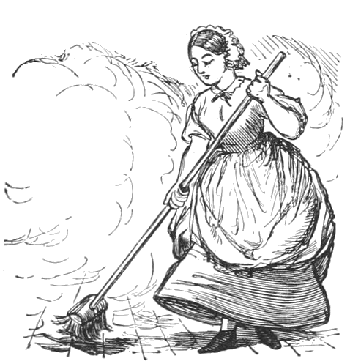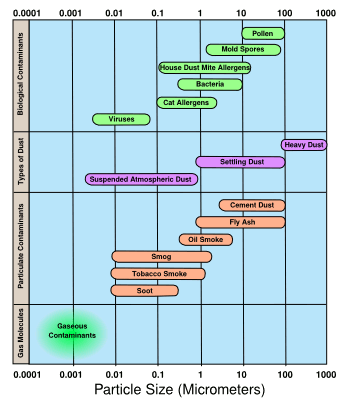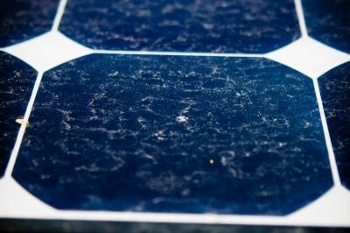Solar Panel Putzfimmel
August 19, 2013
It seems as if every other
advertisement on
television is for one
cleaning product or another. Without these essential products, "
as seen on TV," it's a wonder that
humans survived for so many
millennia.
Much of this
marketing relies on the
psychological urge of many people to
clean to excess. As usual, the
German language has a colorful word for this, "
Putzfimmel," meaning an obsession for cleaning.

An illustration by Charles Keene (1823–1891), from a book by Douglas William Jerrold, "Mrs Caudle's curtain lectures," page 193.
This was a comic strip originally published in Punch magazine.
(Modified Wikimedia Commons image.)
If you haven't noticed, the
Earth is a
dirty place. We should be thankful for that in one sense, since all that dirt (technically,
regolith) became a host for the
vegetation that sustained
life. The Earth is still collecting regolith material from the infall of countless
micrometeorites. Since most of these are
magnetic, it's possible to harvest them, along with other bits of magnetic
debris precipitating from the
atmosphere.[1-2]
Micrometeorites are just a small part of the natural
atmospheric particulates in Earth's atmosphere. Other sources are
volcanoes,
dust storms,
forest fires and grassland fires, and
pollen from vegetation. Because of our
technology, the atmosphere is also laden with artificial atmospheric particulates that add to the natural load.
Fuel burning generates large quantities of
carbon soot, which I wrote about in a
previous article (Paint it Black, February 13, 2013).
Humans put about seven trillion
tons of black carbon annually into the atmosphere.[3] One surprisingly active source is
kerosene lamps, which generate about 270 billion tons, or seven percent of the total.[3] Ninety percent of black carbon comes from
diesel-fueled vehicles,
biomass for household
cooking and
heating, small
kilns and
industrial boilers, and open burning, such as fires for
forest clearing.[3]
Human activities such as
overgrazing,
agriculture, and cutting down forests also cause soil particles to enter the atmosphere. About half of atmospheric dust is likely caused by human activity.[4] The following figure summarizes atmospheric particulates and their particle sizes.

Atmospheric particulates and their sizes.
Click for a larger image.
(Wikimedia Commons image, modified for clarity.)
At present, solar panels coexist with such atmospheric pollutants, so the question arises as to how much this dirt blocks
solar radiation when it soils the panels, and how often you need to wash your panels clean. That's the question that two
engineers at the
University of California, San Diego,
Department of Mechanical and Aerospace Engineering, addressed in a recent paper in the journal,
Solar Energy.[5-6]
The UCSD research team studied 186
photovoltaic sites during 2010. They found that losses from soiling of the panels averaged about 0.051% per day, although a quarter of the sites had loses greater than 0.1% per day. Not surprisingly, panels with shallow
tilt angles, defined as less than five
degrees, showed larger loses from soiling.[5]
Since nature does a reasonable job of rinsing solar panels with
rain, the UCSD
research team looked at the loss encountered for a 145 day
summer's drought in
California. This was only about 7.4%. They calculated that for a typical five
kilowatt residential system this loss translated to a monetary loss of just twenty
dollars; so,
economically, it
doesn't pay to wash your panels. This assessment is true even for larger commercial rooftop systems, although cleaning may be warranted for very large installations.[6]

A dirty photovoltaic panel.
(Photograph: Jacobs School of Engineering/UC San Diego.)[6)]
Jan Kleissl, a
professor of mechanical and aerospace engineering at UC San Diego and
principal investigator on the study, says
"You definitely wouldn't get your money back after hiring someone to wash your rooftop panels."[6]
The study was limited to residential and commercial sites in the region from the
San Francisco Bay Area to the
United States-Mexico border. After the extended drought, just a tenth of an
inch of rainfall was sufficient to clean the panels.[6] The study authors explain that pollution and dust levels in California are fairly representative for the
United States; and, except for things like dust storms in
Arizona, can be considered a
worst case.[6] They did find that panels located in the
Los Angeles basin and the
Central Valley were dirtier.[6]
There are cases for which cleaning is economically warranted. Heavy accumulations of
bird droppings should be washed, since these completely block solar radiation. Also, sites near or downwind from a
highway,
factory or agricultural field may accumulate dirt at a more rapid rate, so they should be cleaned to maintain
efficiency.[6]
The next research effort will be to identify the sources of dirt at various locations, and assess materials and washing systems that might economically keep panels clean.[6]
References:
- J. Witzel, Micrometeorites, IEEE Instrumentation & Measurement Magazine, vol. 6, no. 1 (March, 2003), pp. 55-56, DOI:10.1109/MIM.2003.1184295. This article is pay walled with a rather hefty fee ($31), but an Internet search will yield equivalent information, such as ref. 2, below.
- How to collect space dust!! (micrometeorites), YouTube Video.
- Pete Spotts, "Soot is No. 2 global-warming culprit, study finds," Christian Science Monitor, January 15, 2013.
- Ron Miller and Ina Tegen, "Desert Dust, Dust Storms and Climate," National Aeronautics and Space Administration, Goddard Institute for Space Studies Web Site, April 1997
- Felipe A. Mejia and Jan Kleissl, "Soiling losses for solar photovoltaic systems in California," Solar Energy, vol. 95 (September, 2013), pp. 357-363.
- Ioana Patringenaru, "Cleaning Solar Panels Often Not Worth the Cost, Engineers at UC San Diego Find," University of California, San Diego, Press Release, August 1, 2013.
Permanent Link to this article
Linked Keywords: Advertising; advertisement; television; cleaning agent; cleaning product; as seen on TV; human; millennium; millennia; marketing; psychology; psychological; obsessive-compulsive disorder; clean to excess; German language; Putzfimmel; Charles Keene (1823–1891); Douglas William Jerrold; comic strip; Punch magazine; Wikimedia Commons; Earth; dirt; dirty; regolith; vegetation; life; micrometeorite; magnetism; magnetic; debris; atmosphere of Earth; atmospheric particulates; volcano; dust storm; wild fire; forest fires and grassland fires; pollen; technology; combustion; fuel burning; carbon; soot; ton; kerosene lamp; diesel exhaust; diesel-fueled vehicle; biomass; cooking; HVAC; heating; kiln; industrial boiler; forest; overgrazing; agriculture; solar panel; sunlight; solar radiation; engineer; University of California, San Diego; Department of Mechanical and Aerospace Engineering; Solar Energy; photovoltaic system; photovoltaic site; solar tracker; tilt angle; degree; rain; research; summer; drought; California; kilowatt; residence; residential; United States dollar; economics; economical; return on investment; Jan Kleissl; professor; principal investigator; San Francisco Bay Area; United States-Mexico border; inch; United States; Arizona; best, worst and average case; worst case; Los Angeles basin; Central Valley; bird droppings; highway; factory; energy conversion efficiency.